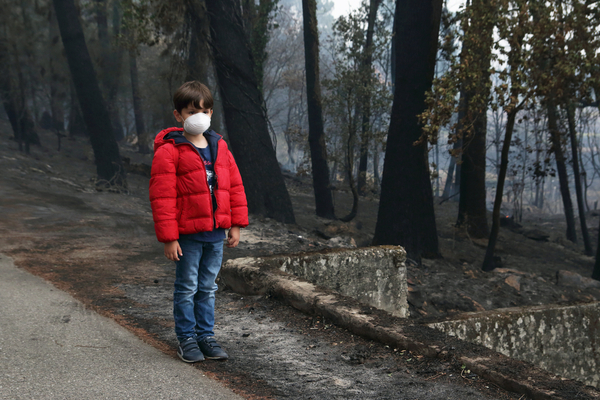The explosive growth of wildfires in the Western US has spewed smoke across the landscape, creating a growing threat to public health. According to the LA Times, driven by climate change, the 2020 fire season was so bad that it doubled the previous record in California for acres burned, and at-home monitoring of the smoke’s effects on air quality became almost commonplace. And, NBC News reported that this year’s season got off to a devastating start and has already darkened skies all the way across the continent on the East Coast with smoke from West Coast wildfires.
But wait, there’s more, and it’s not good. Smoke isn’t your ordinary air pollution. The tiny particles found in smoke can be up to 10 times more harmful to human health than soot from other things like tailpipes and factories, according to research published in the journal Nature earlier this year.
The researchers looked at fine particles, also called PM2.5, that are 30 times smaller than the diameter of a human hair follicle. When a fuel burns, whether it’s gas or vegetation, it sends these fine particles up into the air and sometimes into our bodies. “These particles are unique. Their chemical composition can vary in relation to the materials that are burning. There’s a myriad of potential compounds that can be present in wildfire smoke and fine particles like carbon, heavy metals,” states Rosana Aguilera, the lead author of that study and a postdoctoral researcher at the University of California, San Diego.
Fine particles from wildfire smoke led to 10 percent more respiratory hospitalizations than there would be without the smoke, the study found. Pollution from other sources, while still harmful, increased hospitalizations by just around 1 percent. Says Aguilera, “wildfire smoke can be more harmful in terms of an increase of hospitalizations when compared to just looking at non-smoke fine particles.”
Aguilera adds, “It’s one of the air pollutants of concern because it’s small enough to penetrate our respiratory system and go deep into the lungs. It potentially also enters the bloodstream and from there, can travel to other organs. It can cause difficulty breathing. It can produce irritation and exacerbate conditions like asthma and other respiratory diseases and cardiopulmonary conditions.”
—
Photo Credit: Maria Madrinan / Shutterstock.com
